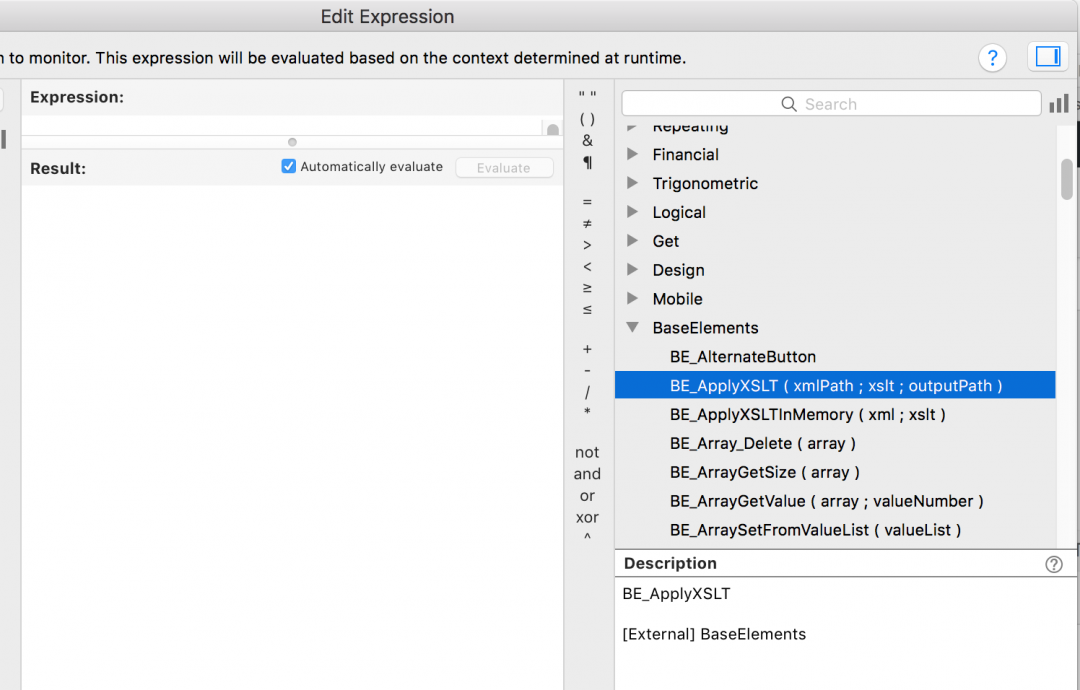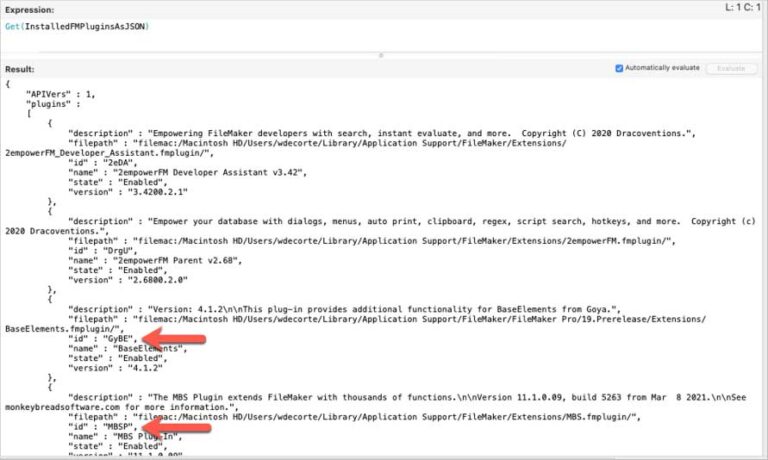

- Baseelements plugin filemaker install#
- Baseelements plugin filemaker update#
- Baseelements plugin filemaker registration#
Whenever you insert from a URL that starts with 'https' or 'http' you are doing a standard GET request. The "Insert from URL" script step is capable of doing GET requests and POST requests. The main way to interact with a RESTful API from FileMaker is using the "Insert from URL" script step. Updates post number 1’s title to New Title.

Retrieves all comments from post number 1. Go ahead and test the GET commands by clicking on the routes below to view some sample data. Understanding the basic structure and actions of a RESTful API will make working with them so much easier.īelow are the standard routes used when working with a RESTful API.
Baseelements plugin filemaker update#
PUT and PATCH are used to update an existing record, and finally DELETE is obviously used to delete a record. POST is used to submit data to a server and is generally used to add a new record or pass more data than would reasonable to put in a URL. The rest of the HTTP methods like POST, PUT, and DELETE can only be performed by web forms or built-in functions provided by most libraries. GET is the most common method, and happens anytime you browse the web, or type in a specific URL into the address bar and is what you would use for the “read” in CRUD. In order to fully work with a REST API you must understand the different types of HTTP methods you can make. With these four actions, you can do anything to a system using an easy-to-understand format.

Another thing you’ll hear a lot when talking about REST is CRUD, which stands for Create, Read, Update, and Delete. The representational part of REST means that the URL or route you use to access or manipulate the data should correspond with the data, so accessing /users should show users, and /posts, should only show posts, and all actions will take place on those URLs.

What this means is that REST is a standard for manipulating data in a standardized format that represents the data. Unfortunately, that doesn’t really tell us much.
Baseelements plugin filemaker install#
Generally, there is separate pricing for use on a server, use by an enterprise or use by a FileMaker developer selling a stand-alone application.A few plugins are free, but most plugins are typically sold based on how many users will be using the plugins, but most plugins can be downloaded immediately and used in a free demo mode which operates for a period of time.Since the release of FileMaker 16, plugins can also install plugin related (external) script steps, however plugin manufacturers have been slow to utilize this new capability.Plugins calculation functions are invoked by calling the Set Variable command and with a given plugin’s function being used in the variable’s calculation. The output of the variable provides information about the success, failure or result of the plugin functions’ operation.Once installed, a variety of new calculation functions (called external functions) become available from the plugin.Plugins can be installed manually or can be installed via a script step.Plugins are installed on each FileMaker client machine and/or on the FileMaker Server machine.Plugins created by 3rd party software developers allow you to extend a FileMaker database’s capabilities beyond what can be done with native FileMaker, and, in so doing, gives your company a strategic advantage.REST stands for “REpresentational State Transfer”.
Baseelements plugin filemaker registration#
Most plugins also have ways to test which version of the plugin is installed and allows for installation of the most recent version.Once purchased, installed plugins are “registered” with a registration script step for the given plugin.Prices range from $50 to thousands of dollars.


 0 kommentar(er)
0 kommentar(er)
